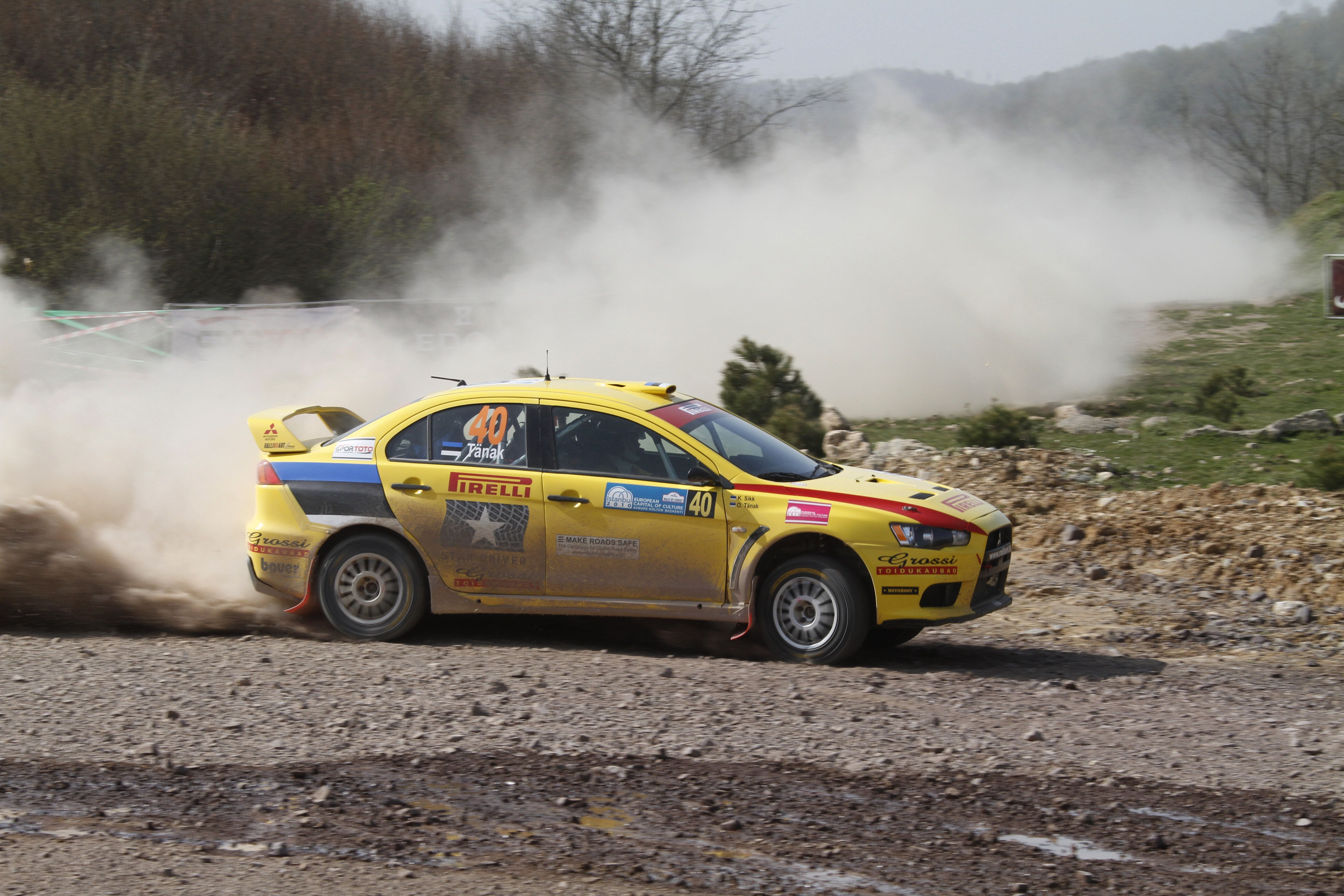Motorsport is a rich person’s game. Without access to a few million dollars through a family fortune or wealthy connections, you’re out of luck for the most part. But the FIA is hoping to change that paradigm with its new Rally Star initiative, aimed squarely at those who’ve got potential but lack the budget to go rallying even at the most basic level.
We’re lucky in rallying that there’s actually quite a few exceptions to this. Sébastiens Loeb and Ogier were both pushed up the ranks with backing from the French federation, and there have been other successful programs funding talented juniors on their journey to the top.
Hyundai’s main pairing in the WRC is a good example of how structured talent-spotting programs can work to identify potential world champions, albeit once a driver’s career is already underway.
Ott Tänak’s rise towards the WRC was properly kickstarted by the Pirelli Star Driver talent search (pictured above) which ran from 2009 to 2011, propelling not only Tänak but Craig Breen and Hayden Paddon towards the WRC.
But those three had already established themselves at national level by that point, with Tänak and Paddon champions of their respective domestic series and Breen a runner-up. Its successful candidates had at least found the budget to compete regularly to a competitive level. There was a British Championship-specific Pirelli Star Driver program too, though likewise its winners had been plugging away for a few seasons before winning its prize drives.
Photo: Jaanus Ree/Red Bull Content Pool
Even when Pirelli dropped the Group N Mitsubishi Lancers for M-Sport-run Ford Fiesta R2s as part of the WRC Academy for 2011, they were still looking at people who’d been able to get their careers up and running in some form beforehand.
It helped, but it was still too far up the food chain to turn success or failure of making it onto the WRC ladder into an absolute meritocracy.
Tänak’s team-mate Thierry Neuville didn’t have to wait quite as long to be spotted. He’d only started racing at 17 years old, beginning with autocross before moving onto a front-wheel-drive Opel Corsa GSi on local rallies in Belgium.
He wasn’t expecting to go much further due to lack of funds, until winning the Ford RACB Rally Contest – organized by Belgium’s motorsport federation – set him on a path to the WRC.
“I was lucky that the Belgian federation had decided to launch a contest for youngsters between 18 and 21 years old,” Neuville explained to DirtFish.
“I participated in and won this contest, and that gave me the opportunity to start rallying in a more professional way in the Belgian championship, supported by the Belgian federation and climbing up the ladders, higher and higher.
“At that time there was not much thinking about structures like we have now for the last 10 years more or less. We have young stars supported and helped by the federation.
“It was not very common before but it’s getting more and more common now, and now with the FIA launching a new project next year with Rally Star, there are really good platforms for youngsters to jump into professional motorsport.”
Photo: RACB/Jacques Létihon
That Rally Star platform is the FIA’s most ambitious plan ever to build a coherent driver development pyramid that goes below Junior WRC, all the way down the very first moments aspiring rally drivers set foot in anything that has an engine.
There’s two key tranches to the Rally Star system: Slalom (or ‘motorkhana’) where youngsters between 17-26 navigate a production car around a slalom course. The other is the controversial one; using WRC 9, the newest instalment of the world championship’s video game franchise, to identify drivers to participate in a series of continental finals with real-world CrossCars. Those winners will then be put through their paces in regional rallies in a Rally3-spec car, with the four best given a crack at Junior WRC. It’s ambitious, to say the least.
But how can it be even close to as reliable as the process Neuville went through?
FIA regional rally category manager Jérôme Roussel is heading up the project and made clear that sitting in front of a screen for days on end, learning stages on a video game like “a kind of monkey” is not the point of the exercise.
“In the end the ultimate target is to find people who have talent. So that’s why we are introducing into the DLC [Downloadable Content] some specific things [on WRC 9] that will allow us to filter a bit the experience,” Roussel explained to DirtFish.
“For example, in the DLC, we will have the car that will have the Rally3 technical specification, the new category [starting next year]. And the Rally3 will not be available anywhere else except this DLC.
“That will first allow us to filter by the car to make sure that we don’t choose the guy who spends three months [driving] a WRC [car] just to make sure he knows everything by heart. It will be the same for the stages; for example WRC 9 has a kind of playground where they can accommodate multiple stages, so we will be able to create new stages that nobody knows.
“So if we mix the car plus the special stages, plus the fact you will not be able to try [to win] one thousand times, we may be able to find a guy who is fast, clever but also able to adapt to the situation.”
This new system is clearly still a work in progress; specifics are being worked out and different countries will be able to operate their Rally Star programs as they see fit within the FIA’s loose framework.
In addition to trying to set quick times from home, ASNs will be encouraged to organize real-world events with “three, four or five” simulators, ideally run in tandem with the slalom contest but theoretically available to deploy anywhere, even “a shopping mall or a university” as Roussel points out.
There’s little doubt the Rally Star program is going to reach more budding rally drivers without the funds to get onto stages with a real car than ever before. “If we want to spot the talent, we need to create the biggest possible sample size,” Roussel rightfully points out. But isn’t this merely fanciful thinking, that video games could be a reliable benchmark?
“Across the years, the rally simulations become more and more relevant,” Roussel adds
“I don’t think this would have been possible 10 years ago but now the games are becoming more and more realistic. On realism, WRC 9 will be a big step forward.”
Photo: Jaanus Ree/Red Bull Content Pool
In addition to Hyundai’s factory WRC driver Nikolay Gryazin using Richard Burns Rally to warm-up after the long lay-off – a 16-year-old game, it should probably be stressed – and WRC Esports champion Jon Armstrong switching effortlessly between gaming and reality, Roussel pointed to another (former) factory driver who’d embraced the digital revolution.
“I spent a bit of time with Stéphane Lefebvre when he was a Citroën driver and he was spending many days on his simulator,” adds Roussel.
“At this point I believe he was driving on Project CARS but he was also driving on DiRT and so on. So we can feel that now for a rally driver, for the new generation, the simulators became relevant.”
Specifics of how the video game-based qualifiers are still to be worked out. The FIA and WRC 9 developers KT Racing are still to hammer out the format which will be used to decide the lucky few from each ASN who make it to a regional CrossCar final, with that meeting taking place this week.
Does Rally Star have a hope at achieving its ultimate aim of plucking a gamer from obscurity and pushing them all the way to WRC3, within touching distance of the pinnacle of rallying? Maybe, maybe not. But what is clear is that reaching those CrossCar regional finals is genuinely accessible.
DiRT Rally 2.0 World Series rallycross champion Killian Dall’Olmo uses a €350 ($420, £320) Thrustmaster wheel with a built-at-home stand and a well-used bucket seat he got for free. Spending money on better parts doesn’t make you any faster in the virtual world. Splashing a few grand on a new set of Reigers can’t find you a few extra seconds on a video game.
If the governing body and the WRC 9 developer can solve the learning-by-repetition headache for its virtual selection process, it might be onto a winner.



